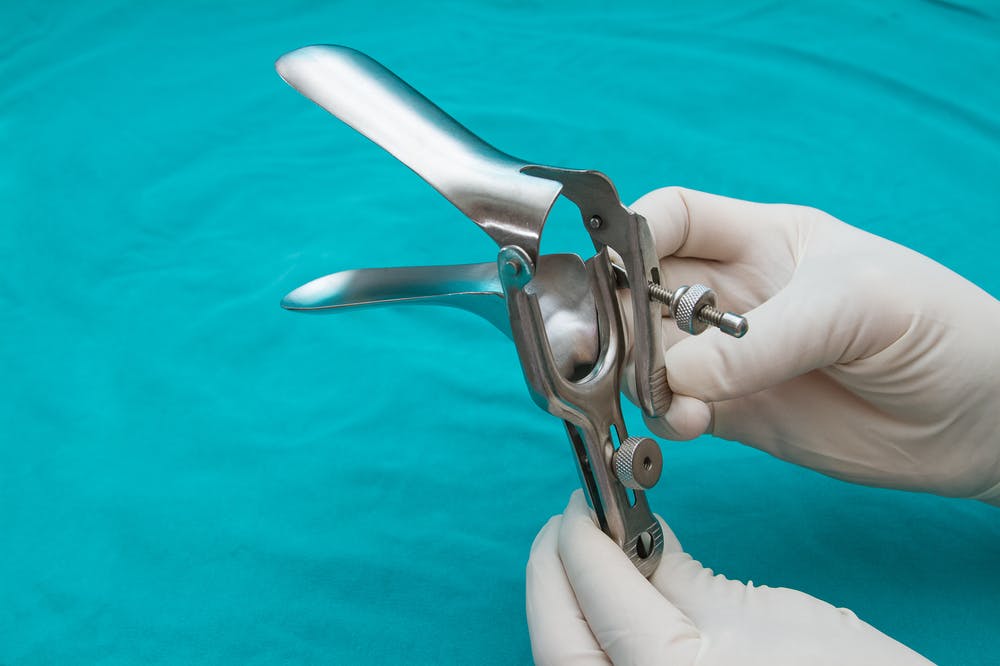In 2015 alone, 52 million pelvic exams were performed in the United States, according to a committee opinion from the American College of Obstetricians and Gynecologists (ACOG). A key component of this exam is the speculum, that familiar gynecology instrument that resembles a medieval torture device.
This instrument was clearly not invented with patient comfort in mind, yet its design has changed little in the nearly two centuries since its advent. Is it time for a shift in thinking?
The History of the Speculum
In 1845 in the slave-holding American South, a surgeon named James Marion Sims began performing surgeries on enslaved women, without anesthesia, to treat vesicovaginal fistulas and better understand the reproductive system. Those brutal beginnings formed the basis for modern gynecology. Part of Sims' work required that he see inside the vagina, so he invented a gynecological instrument with bills that brace against the vaginal walls and a screw mechanism that allows a physician to spread open the device and peer inside.
The use of the speculum greatly changed what could be learned about the vagina and cervix by allowing (mostly male) doctors to gain an internal view. Lab testing and imaging modalities such as ultrasound were not available to the burgeoning gynecology field, so visualization formed the basis for understanding and treatment. The speculum also adhered to 19th century rules around gender by allowing a male doctor to look without touching.
Today's speculum is made of surgical grade stainless steel or plastic, but its general design and function have barely evolved since its grim origins.
Is There Room for Change?
The speculum is a mainstay in gynecology practice. Patients — while they may hate it — know exactly what to expect during a pelvic exam. Step one: Scooch all the way to the end of the table and lift both feet onto the stirrups. Step two: Brace for the feel of the cold metal, hear the creaking sound of the screw and feel the pressure as the speculum spreads open. For gynecologists, this process may be a mundane daily task. But for some patients, especially sexual assault survivors or transgender people, it can cause extreme pain and anxiety.
Over the last several years, physicians, designers and engineers have started to rethink the speculum's construction. A few proposed alternatives have come on the scene since the early 2000s, but many have failed. When a company introduces a new way of performing a routine exam that is deeply ingrained in physicians' minds, it is rarely met with open arms.
However, the tide may be changing. Patient-centered care is at the forefront of healthcare delivery. Once predominantly male, the gynecology field has shifted toward its patients: NPR reports that in 2018, 82 percent of doctors entering OB/GYN residency programs were women.
Women are leading the development of the speculum and pelvic exam of the future. Researchers at Duke University are developing a lighted scope that would provide enough visibility to eliminate the need for a speculum altogether. A group at the design firm Frog is at work on an entirely redesigned speculum called Yona, which is made of autoclavable silicone and has three prongs instead of two. Frog also adjusted the ergonomic angle of the handle, creating more space between the doctor's arm and the table. Its initial reception in the gynecology community has been positive, but the product is not yet available to clinicians.
Is the Speculum Necessary?
In 2014, the American College of Physicians argued that pelvic exams are not necessary for asymptomatic, nonpregnant women. Pap smears and other swab tests can be performed without the speculum. ACOG followed suit in 2018, suggesting pelvic exams should be limited to women with a medical history or symptoms that warrant one.
Curbing the use of the speculum may open the door to new — and less universally loathed — devices on the market. For now, though the standard metal device remains, it looks as though the next gynecological instrument on the horizon will be one that better promotes patient-centered care.



